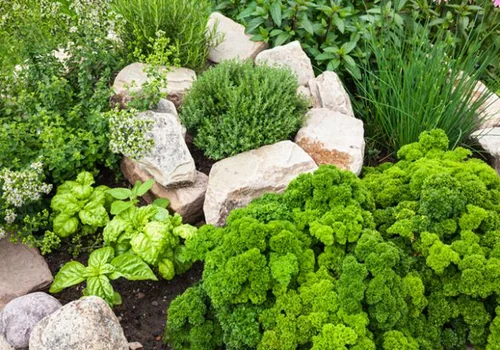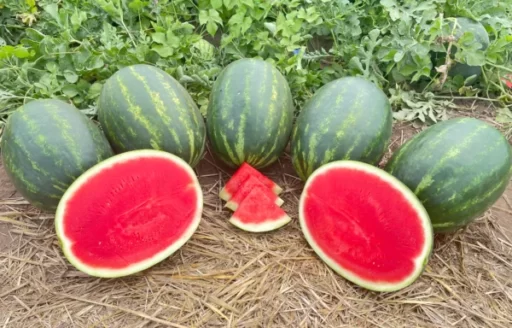As spring arrives, gardeners everywhere are feeling the excitement of new growth and the promise of a bountiful harvest. However, this season also brings the responsibility of ensuring that your garden thrives amid the rapid changes in temperature and weather. To help you navigate this critical time, we’ve compiled a list of the top 10 gardening tasks to tackle this month. From promoting early fruit production to controlling weeds, these tips will set you on the right path for a flourishing garden.
1. Forcing Rhubarb for Early Harvest
Rhubarb is a perennial favorite for gardeners, and forcing it can provide an early harvest. By placing a cover over your rhubarb crown, you create a warm environment that encourages faster growth. Check your plants regularly for signs of growth, and with a little patience, you can expect to harvest within six to eight weeks. This early cropping not only gives you a head start but also enhances the flavor of your rhubarb.
2. Potting Up Strawberries
Strawberries can also be prepped for an early yield. Transition your outdoor strawberry plants into a greenhouse or cold frame to provide them with the warmth they need to thrive. After a proper chilling period, strawberries require repotting into fresh potting mix to boost their growth. A soil-based mix works best for these perennials, and adding organic fertilizers like blood, fish, and bone can enhance nutrient availability. As the plants begin to flower, switch to a potassium-rich liquid feed to support fruit development.
To increase pollination efficiency in early spring, you might consider hand-pollinating your strawberry flowers using a paintbrush to transfer pollen, ensuring a successful fruit set even before bees become active.
3. Managing Greenhouse Ventilation
As temperatures rise in your greenhouse or tunnel, it’s essential to manage ventilation effectively. On warm days, humidity and temperature can soar, leading to soft, overly lush plant growth. To combat this, open all doors, vents, and windows to create a good airflow and stabilize temperature fluctuations. A maximum/minimum thermometer can help monitor the conditions, ensuring your plants remain healthy.
4. Continue Harvesting Winter Crops
Even as you prepare for spring, don’t forget to harvest your winter crops such as kale, chard, leeks, and parsnips. These hardy vegetables not only provide fresh produce during the colder months but also help maintain soil health. Use these ingredients to make hearty soups that will warm you up after a chilly day in the garden.
5. Pricking Out Seedlings
One of the most satisfying gardening tasks is transferring seedlings to individual pots, a process known as “pricking out.” Carefully remove seedlings from their pots, ensuring you handle them by their leaves to avoid damaging their delicate stems. Create holes in the new pots using a stick or spoon, and gently guide the roots into place. Performing this task while seedlings are still small helps reduce root damage, making for a smoother transition.
6. Mulching for Soil Health

As winter fades, mulching is crucial for protecting soil and nourishing plants. Use organic materials like partially decomposed leaves, compost, or wood chips to cover the soil around fruit bushes and trees. This not only conserves moisture but also enhances soil structure as the mulch decomposes. Remember to keep mulch away from the base of plants to prevent rot.
7. Planting New Fruit Trees and Bushes
Early spring is an excellent time to plant new fruit trees and bushes, whether bare-root or container-grown. Planting now gives them a head start, allowing them to establish their root systems before the growing season fully begins. Ensure they are placed in a sunny spot with well-drained soil to maximize their growth potential.
8. Creating a Compost Pit
Maximize the benefits of kitchen waste by creating a compost pit. Dig a hole where you plan to plant crops like beans or squash, and bury your organic waste about 12 inches deep. Covering it with soil helps prevent wildlife from digging it up while enriching the soil over time. Mark the location of the compost pit with a stick to avoid losing track of it during planting.
9. Caring for Water Features
If you have a pond, spring is the perfect time for maintenance. Clear away debris and fallen leaves that can harm water quality. While some sludge at the bottom provides habitat for wildlife, excess organic matter should be removed to prevent oxygen depletion. Topping up the pond with rainwater will maintain its level, and adding marginal plants will enhance the ecosystem.
10. Weed Control Strategies
Weeds are often the first signs of spring, and managing them effectively is crucial for a successful garden. An innovative method is to encourage weed germination before planting your crops. By covering the soil with glass or clear plastic, you can warm it up and stimulate weed growth. Once the weeds emerge, simply hoe them off to create a clean bed for your desired plants. This method not only gives you a head start but also saves time later.
11. Early Sowing of Radishes
Radishes are one of the first crops that can be sown in cool spring conditions. They germinate quickly, even in lower temperatures, making them a reliable choice. Sow radish seeds in well-drained soil, spacing them appropriately to avoid overcrowding. Consider using protective coverings to retain warmth during their early growth stages.
12. Planting Cucumbers
As the month progresses, cucumber seeds can be sown for a refreshing summer harvest. For optimal growth, sow seeds indoors in a warm environment, ensuring they are planted at the correct depth in quality potting mix. When they’re ready, these seedlings can be transferred outdoors to continue their growth.
Conclusion
Spring is a vital time for gardeners to prepare and nurture their gardens for the growing season ahead. By completing these essential gardening tasks, you’ll set yourself up for a successful year filled with vibrant plants and a bountiful harvest. Embrace the opportunities that this season offers, and enjoy the fruits of your labor as you watch your garden flourish.
Frequently Asked Questions
- What are the best crops to grow in early spring?
- Crops like radishes, kale, and leeks thrive in early spring due to their hardiness.
- How can I promote early strawberry growth?
- Potting them in a greenhouse or cold frame helps maintain the warmth they need for early flowering.
- What should I do to manage greenhouse temperatures?
- Ensure good ventilation by opening vents and doors to maintain a stable temperature and avoid excessive humidity.
- What is the best way to mulch my garden?
- Use organic materials such as leaves or compost and avoid placing it directly against plant stems to prevent rot.
- When is the best time to plant fruit trees?
- Early spring is ideal for planting both bare-root and container-grown fruit trees to establish their roots before the growing season.
- How do I create a compost pit effectively?
- Dig a hole about 12 inches deep in your planting area and bury kitchen waste, covering it with soil to enrich the garden.
- What are effective ways to control weeds in my garden?
- Encourage weed germination by warming the soil with glass or plastic covers and hoe them off before planting your desired crops.





